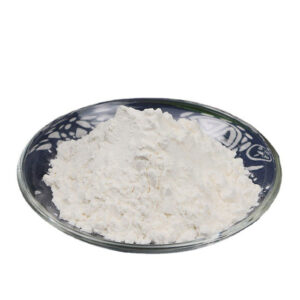Description
4-Nitrotoluene CAS 99-99-0 Quick details
| Chemical Name: | 4-Nitrotoluene |
| Other Name: | 4 Nitrotoluene; 4 Nitrotoluen; PARA nitro toluene; 1-Methyl-4-nitrobenzene; p-Nitrotoluene |
| CAS: | 99-99-0 |
| EINECS: | 202-808-0 |
| Type: | Pesticide Intermediates; Agrochemicals |
| Molecular Formula: | C7H7NO2 |
| Molecular Weight: | 137.14 |
Chemical Properties
| Melting point | 52-54 °C (lit.) |
| Boiling point | 238 °C (lit.) |
| density | 1.392 g/mL at 25 °C (lit.) |
| vapor density | 4.7 (vs air) |
| vapor pressure | 5 mm Hg ( 85 °C) |
| refractive index | 1.5382 |
| Fp | 223 °F |
| storage temp. | 2-8°C |
| solubility | 0.26g/l |
| form | Crystalline Solid |
| pka | 11.27 (Perrin, 1972) |
| color | Yellow |
| Specific Gravity | 1.392 |
| explosive limit | 1.6%(V) |
| Water Solubility | 0.35 g/L (20 ºC) |
| Stability: | Stability May be shock sensitive. Incompatible with sulfuric acid, strong bases, reducing agents, strong oxidizing agents. |
4-Nitrotoluene Uses
4-Nitrotoluene, also known as p-nitrotoluene or 4-nitrotoluen, is a pale yellow compound that forms diamond-shaped crystals and has a mildly pleasant, bitter almond odor. Although it is nearly insoluble in water, this substance primarily finds use in the production of DSD acid and whitening agents. Furthermore, it serves as an intermediate in the manufacturing of dyes, pesticides, medicines, synthetic fibers, and for explosives detection.
Key Applications in Industry
As an important chemical intermediate, 4-nitrotoluene plays a critical role in synthesizing herbicides such as chloromethylene. In fact, the chemical industry heavily relies on it as a raw material. Specifically, companies use 4-nitrotoluene to produce several key compounds, including p-toluidine, toluene diisocyanate, p-nitrobenzoic acid, p-nitrotoluene-2-sulfonic acid, 2-nitro-p-toluidine, and 3-chloro-4-nitrotoluene. Additionally, it serves as a crucial component in the production of dye intermediates and plays a significant role in the manufacture of pesticides, medicines, plastics, and synthetic fiber auxiliaries.
Sulfonation and Derivatives
The primary application of 4-nitrotoluene involves its sulfonation to produce 4-nitrotoluene-2-sulfonic acid, where a –SO3H group attaches adjacent to the methyl group. Consequently, this sulfonation product can undergo oxidative coupling to produce stilbene derivatives, which are essential in the dye industry. Notably, representative derivatives include both molecular and salt forms of 4,4′-dinitro-2,2′-stilbene disulfonic acid, such as 4,4′-dinitro-stilbene disodium-2,2′-disulfonate.







Reviews
There are no reviews yet.